The Windy City, the City of Big Shoulders, the Second City—no matter what you call it, the 1,900 alumni in Chicago love to show us their town.
As the air turns crisp in the early days of fall, Chicago’s Lake Michigan beaches close for the season—but even if she’s not going for a swim, Brittany Hopkins ’14 frequently visits the strip of sand between one of the world’s largest lakes and the rearing skyscrapers of American’s third‑largest city. On some days the lake stretches out in a placid sheet, the water a Caribbean turquoise; on others it roils in tattered, gun-metal gray waves.
“In Chicago, people are very in tune and engaged with the lake,” she says. “It’s just such a beautiful view.”
Chicago’s lakefront has been almost exclusively reserved for public recreation since the early 20th century. Roughly 26 miles of parkland and beaches separate development from the waters along the city’s eastern edge. And whether you’re someone like Hopkins, with roots in the city stretching back three generations, or you’re a newcomer, the lake is a continual draw.
As Javaree Walker ’12S (MS), ’15S (MBA), a recent transplant from the East Coast, sees it, Chicago’s “Riviera” rivals the city beaches of Miami—and definitely surpasses those of New York. He often recommends that people come in the warmer months not only to enjoy them but also to truly acquire a taste for Chicago.
Meet your guides
The Chicago Regional Network, cochaired by Eric Weissmann ’10 and Suzanne Sawada ’73, plans reunions and networking activities for alumni in Chicago and throughout the Midwest.
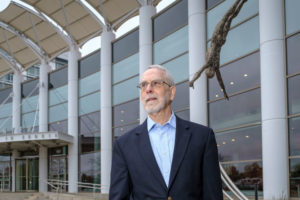
Philip Greenland ’74M (MD), ’78M (RES)
Skokie, Illinois
Having lived in Chicago for nearly 30 years, Greenland—a cardiologist and faculty member at Northwestern University’s Feinberg School of Medicine—has come to appreciate the quieter charm of the suburbs. There’s as much cultural and culinary diversity just outside the city limits, he says, as in the trendiest parts of town.
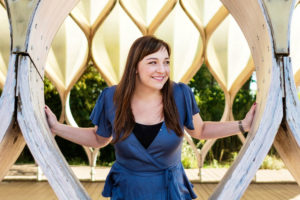
Brittany Hopkins ’14
Chicago
Hopkins, a third-generation Chicagoan, returned to her hometown right after graduating from Rochester to begin a PhD program in neuroscience at Northwestern University. In addition to working with the Leadership Cabinet, she is the national cochair of Rochester’s Young Alumni Council.
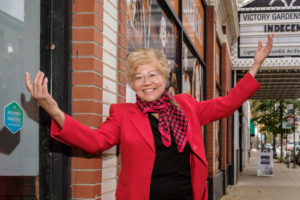
Suzanne Sawada ’73
Evanston, Illinois
Born in Chicago, Sawada and her family moved around the Midwest and East Coast throughout her childhood. Eventually she made it back to her roots to forge a corporate legal career. She’s now retired as an assistant general counsel at BP, cochairs the Chicago Network Leadership Cabinet, and chairs the Chicago branch of the George Eastman Circle.
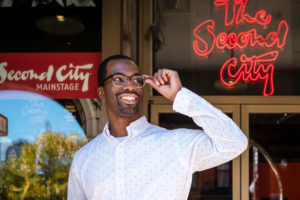
Javaree Walker ’12S (MS), ’15S (MBA)
Chicago
Originally from Long Island, Walker moved to Chicago to join his fiancée (now his wife) after completing his MBA at Simon. He lives in the city’s burgeoning South Loop neighborhood and develops brand partnerships at Pinterest.
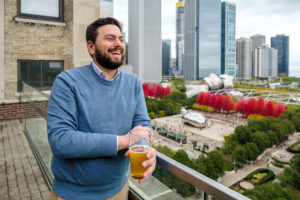
Eric Weissmann ’10
Chicago
Arriving in Chicago for business school in 2015, the D.C.–area native found his home. Though his job for an industrial printer manufacturer takes him out to a suburb near O’Hare airport, Weissmann’s home base is the Wicker Park neighborhood, where he lives with his wife, Colleen, and newborn son, Jonah.
Photos: Jim Prisching for Rochester Review
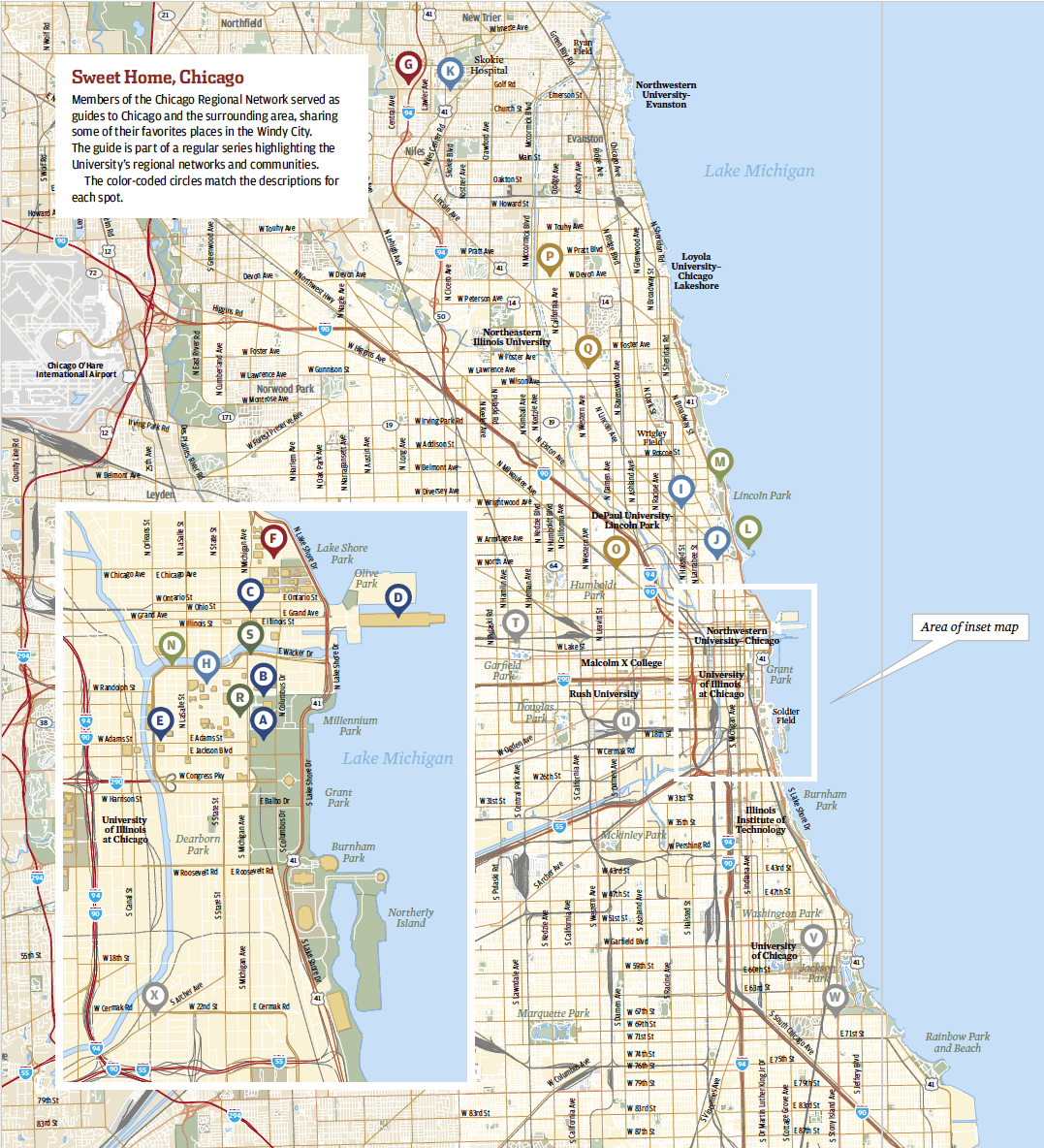
“If you come in the summer, you’ll fall in love with the city. There’s just so much going on,” Walker says.
I couldn’t agree more. I came to Chicago for the first time the day I moved here, in August of 2013, and fell in love as I cruised onto Lake Shore Drive, the vastness of the lake stretching endlessly toward the horizon. Why had I never heard about how beautiful this city was? A combination of personal and professional circumstances led me here quite unexpectedly, and within days I knew I wanted Chicago to be my forever home.
I discovered festivals, and art fairs that stretched for blocks, theater performances, farmers’ markets, and community barbecues that pop up in parks that punctuate our flat city grid like colonies of moss.
“I think if it was warmer, it would be an even more popular city,” Walker says with a laugh. “Everyone would want to come here.”
But much of what makes Chicago worth a visit is always in season: a thriving performing arts and restaurant scene (more to eat here than deep dish and ketchupless hot dogs!), dozens of neighborhoods with their own architecture, museums of all stripes, and professional sports teams for every superfan.
As members of the Chicago Regional Network, Walker and Hopkins work to connect the University community in the Midwest through events and outings, often centered around city treasures.
“It’s gratifying to meet other alums, especially in a city that’s not as well known for its Rochester population,” says Hopkins, who was recently named as a national cochair of the Young Alumni Council. “I think a lot of alums, when they graduate, if they’re not moving to D.C., or New York, or Boston, they feel like they’re the only one who’s moving to Chicago—but that’s really not the case.”
Indeed, there are 1,900 of us working, playing, and parenting in this City of Big Shoulders. And we love showing Chicago off.
Classic orientation: Chicago you say?
Before going “off the beaten path” one has to know what the beaten path is, right? Our list of recommendations comes with the stipulation that if it’s your first time in the Windy City, you should by no means neglect the classic attractions:
A. Art Institute of Chicago
111 S Michigan Ave.
Consistently rated as one of the best art museums in the world by experts and tourist websites alike, the museum is at once expansive and manageable, with collections spanning antiquity to contemporary art. It’s also a short walk from the larger “Museum Campus,” where you’ll find the Field Museum, Adler Planetarium, and Shedd Aquarium.
B. Millennium Park
201 E. Randolph St.
Take a stroll across the street once you’re done at the Art Institute to get your obligatory photo with the Bean—the shiny, stainless steel sculpture by Anish Kapoor that’s technically called Cloud Gate. All summer you can catch free concerts and film screenings in the vast amphitheater designed by Frank Gehry, too.
C. Magnificent Mile
Michigan Avenue, between Oak Street and the Chicago River
This is the city’s main commercial drag, with both luxury and mainstream retail, horse carriage rides, and the historic water tower.
D. Navy Pier
600 E. Grand Ave.
If you’re brave enough to face the crowds, the pier offers a delightful walk. Turn around once you get to the end for a breathtaking view of the skyline. The 3,300-foot pier is also home to a Ferris wheel, the Chicago Shakespeare Theater, an IMAX, and the Children’s Museum. It’s the departure point for boat tours on the lake and the blast-off site for fireworks twice a week all summer long.
E. Skydeck at Willis Tower
233 S. Wacker Dr.
What visit to any city is complete without climbing up to the highest place for a look around? Located at the top of the building formerly known as the Sears Tower (now the second-tallest building in America), the deck lets you appreciate the city and the vastness of the lake from 1,353 feet.
More than a museum
Sure, there’s the Art Institute of Chicago, but the city also has a vibrant contemporary art scene and a world of museums that combine social activism with the visual arts.
F. Museum of Contemporary Art
220 E Chicago Ave.
Chicago’s premier modern art museum offers the opportunity to connect with the work of many living artists and is a testament to the growing diversity in the world of high art. The museum has a permanent collection, but rather than displaying pieces all the time, curators tap the collection for a rotating stream of exhibitions. The museum also hosts temporary shows with loaned works. “There are more pop artists, things I can appreciate in a different way versus some things from the 17th century—that really doesn’t excite me,” Walker says. One of the highlights of the last several years for him was a major survey of the works of Kerry James Marshall. “That particular exhibit was a big deal,” he says. Among the monumental canvases on show was a painting of a black family picnicking by Lake Michigan. Last year it set a sales record for a work by a living African-American artist.
G. Illinois Holocaust Museum and Education Center
9603 Woods Dr., Skokie
“It’s not exactly an uplifting place but it’s an important place,” says Philip Greenland ’74M (MD), ’78M (Res). “It’s actually one of the biggest Holocaust museums in the United States.” The museum complex opened in 2009 and though it’s an impressive building designed by one of Chicago’s star architects, it traces its roots to a storefront. There, local Holocaust survivors organized a foundation and an education center in the late 1970s, after neo-Nazis threatened a march in the middle of the town. After World War II, thousands of survivors settled in Skokie, making it a place where not only contemporary Jewish culture but also memory could thrive. “They say that at one time one in every six residents of Skokie was a Holocaust survivor,” Greenland says.
On stage
Chicago has vibrant theater and comedy scenes, and there are venues large and small, for every taste and every budget.
H. Goodman Theater
170 N. Dearborn St.
Located in the heart of the Loop, the Goodman is home to one of the oldest theater companies in Chicago. Performances range from Shakespearean classics to productions by up-and-coming playwrights. “They have an experimental side and a [second stage] with bigger pieces,” says Suzanne Sawada ’73, an avid theater-goer. Chicago has an “amazing wealth of aspiring actors and actresses and playwrights,” she adds, “it has an incredible theater community, and if you look in the paper or go online, there are all kinds of interesting plays to go to.”
I. Victory Gardens Theater
2433 N. Lincoln Ave.
One of Sawada’s favorites among the myriad storefront theaters that pepper the city is the Victory Gardens Theater. Housed in the historic Biograph movie theater—where John Dillinger was shot by FBI agents in 1934—the company has focused on developing and staging new work and fostering diversity in the theater scene since its founding in 1974. Sawada says that “there are a lot of theaters that start with a handful of people . . . they start out small,” but over time Chicago’s storefronts have produced some of the nation’s leading dramatic actors and playwrights.
J. Second City
1616 N. Wells St.
While Chicago’s theater scene may always compete for the limelight with New York, the city is the undisputed cradle of improvisational comedy. Think of any famous comedian who’s been part of Saturday Night Live—more likely than not, they got their start with Second City. Today the nation’s aspiring comedians— and even ordinary people who want an unusual challenge—still flock to Chicago to learn the art of improv. Walker discovered the comedy theater through taking a six-week class. “Every year I try to do something that’s a little out of my comfort zone,” he says. He’s loved bringing visitors to shows ever since. There are nightly performances. “It’s a really cool thing that’s unique to Chicago,” Walker says.
K. North Shore Center for Performing Arts
9501 Skokie Blvd., Skokie
This may seem like an out-of-the-way venue, but Greenland insists it’s worth a visit. “They have theater events there, music events there, and there’s a repertory theater company that has about eight plays a year,” says Greenland. There are also regular dance performances and a symphony orchestra. With free parking and public transit connections from Chicago “it’s almost like being in Rochester, [given] how convenient it is [to get there],” he adds.
Parks and beaches
Between the lakefront, the riverfront, and dozens of square miles of picturesque parks, the city’s got your nature fix.
L. North Avenue Beach
1600 N. Lake Shore Dr.
With nearly 30 miles of public land alongside Lake Michigan, Chicago has a beach to fit every taste—from vast, uncrowded stretches of sand, to rocky natural waterfront, to the bustling beaches at the heart of the city. Hopkins prefers those, especially the one at North Avenue, which abuts her Lincoln Park neighborhood. “It’s so nice to have that amazing resource,” she says. “When my friends are visiting, I love to have them go on a walk along the lake path.” Between Memorial Day and Labor Day, the beach is open daily and has rows of volleyball nets, a restaurant, and easy access to the biking and walking trails And even in the winter, the beach makes for a scenic destination.
M. Lincoln Park
2021 N. Stockton Dr.
Though Lincoln Park is the name of one of Chicago’s 77 officially recognized “community areas,” it’s also the name of the city’s largest park, running for 1,208 acres along the lake. The section of the park that gave the neighborhood its name includes a zoo, a large conservatory, and a nature walk with native flora and fauna. “Coming here it’s so easy to forget that you’re in the city,” says Hopkins. “It’s a bit of an escape from the hustle and bustle.” She gets a kick out of visitors’ amazement that all of this is free and open to the public. “People are always astounded that you can just walk through the zoo.” The park is also home to the Chicago History Museum, a rowing canal, a garden landscaped by Alfred Caldwell Lily, a theater, and a weekly farmer’s market.
N. Riverwalk
Chicago Loop
“The Riverwalk is an off-the-beaten-path type of place but has totally become a central part of the city,” says Eric Weissmann ’10. Neglected for decades as a polluted commercial thoroughfare, in recent years the city has directed tremendous resources to cleaning and beautifying the waterway that flows from the lake to the heart of the city, turning it into a year-round attraction. “You see people of all ages, tourists and locals. There are places to drink beer and wine and places to drink coffee.” Weissmann used to live in the neighborhood, and the walk was a regular part of his routine. “You go on a leisurely walk along the river and then you turn the corner and look out and you see what looks like a vast ocean—Lake Michigan.”
Eating and experience
Chicago’s restaurant scene has become world famous, but there are also plenty of lesser-known and beloved neighborhood spots.
O. Big Star
1531 N. Damen Ave.
A legendary taco joint in Weissmann’s home neighborhood of Wicker Park that’s open into the wee hours and pitches itself as a purveyor of “whiskey and honky-tonk,” too. In the summer, its large patio is a particular draw for locals. “Seven nights a week and all day Saturday and Sunday, that patio is packed,” he says. “I would say it’s the greatest spot ever to burn through a weekend day with tacos and margaritas and friends.”
P. Tel-Aviv Kosher Bakery
2944 W. Devon Ave.
Located on the far northern edge of the city, the family business is both beloved by locals who’ve been here for generations and celebrated by out-of-town foodies for its delectable babkas, rugelach, and doughnuts. Greenland says the bakery has embraced the changing nature of the old Jewish neighborhood around it, adding central and South Asian pastries and breads to its repertoire. “You have a combination of traditional Jews who shop there and Indian and Pakistani Muslims,” he says. “It’s not only a kosher bakery, but it [also] really has this broad ethnic appeal.” Closed on Saturdays for Shabbat.
Q. Elizabeth
4835 N. Western Ave.
A farm-to-table restaurant run by a self-taught chef nestled in the Lincoln Square neighborhood. The place is known for its themed dinners and has a very vegetarian-friendly menu. “They did several months of a Wes Anderson–themed dinner, and that was fascinating,” says Sawada, referring to the film director. “Every course was based on a different movie.”
Vantage points
Chicago’s a flat city, and we have our fair share of skyscraper observation decks to marvel at vast expanses of the lake and the city’s grid. But the view isn’t always best from the top.
R. Cindy’s
12 S. Michigan Ave.
The drinking and dining establishments of the Chicago Athletic Association—a once-exclusive men’s club that has been remodeled into a hotel—range from a Shake Shack to a six-seat cocktail bar with $50 drinks. Cindy’s falls somewhere in between, and it offers a glass ceiling and a panoramic view of the skyline and the lake across Millennium Park. “You have great food, cocktails, beer, and then you step outside onto the all-season patio and you look out and see the most iconic views of the city,” says Weissmann. The restaurant is also a favorite destination to take visitors to because “the association itself is so iconic.” The original men’s club was built in 1893 to coincide with the World’s Fair. The façade takes the form of a Venetian palazzo turned into a modern high-rise, and many of the carved wood and marble interior design elements have been meticulously preserved. “There are so many secret tucked-in bars and restaurants around the building,” Weissmann says.
S. Architectural Boat Tour
Southeast corner of the Michigan Avenue Bridge at Wacker Drive
One of the best ways to see the architectural jewels of the city is a boat tour along the Chicago River. Be sure to go with the one offered by the Chicago Architecture Foundation, whose passionate volunteers give the best on-board lectures in town. “I’ve been here four years and I’ve probably been on it eight or nine times,” says Walker. “I think that’s one of the most beautiful things to see.” Though pricey ($47), the tour is well worth the views and educational immersion in the city’s most cherished landmarks.
T. Garfield Park Conservatory
300 N. Central Park Ave.
One of the largest indoor botanical gardens in the world, the conservatory was designed by famed landscape architect Jens Jensen. It’s especially lovely in the colder months, when you can soak in the warm humidity of the tropical plants under the vaulted dome of the Palm House and the arid heat among the cacti and succulents in the Desert House. The crown jewel is the Fern Room, with a waterfall and lagoon designed to replicate the marshy landscape of Chicago before human settlement. There are also seasonal floral collections, and acres of gardens outside the conservatory. And best of all, like all Chicago Park District attractions—it’s free!
U. National Museum of Mexican Art
1852 W 19th St.
The museum was born in the 1980s with a social mission: to create an institution to honor artistic and cultural production from both sides of the southern border, thereby educating the public about Mexican art and uplifting the neighborhood around it. Located in the Pilsen community on the west side (once home to Czech immigrants), the museum is free and boasts a permanent collection spanning 3,000 years. It also hosts special exhibits, lectures, music, theater, and dance performances on a regular basis. You’ll find a plethora of fascinating books and colorful handicrafts in the museum store, and a world of fabulous Mexican food and countless breweries in the neighborhood just outside.
V. Plein Air Café
5751 S. Woodlawn Ave.
Really, this is a plug for a little cluster of attractions on the University of Chicago campus in the heart of Hyde Park. Plein Air is a light-filled, all-day type of eatery, where you can get sandwiches, salads, and grain bowls made with farm-fresh ingredients. It’s attached to one of the best book stores in the city— the cavernous Seminary Co-Op. You can get lost in the cleverly designed stacks for hours. The building was designed by Tigerman McCurry (who also created the Skokie Holocaust Museum) and is right next door to another jewel of modern architecture: Frank Lloyd Wright’s Robie House.
W. Stony Island Arts Bank
6760 S Stony Island Ave.
In 2015, Theaster Gates, one of the most influential sculptors and installation artists of his generation and a tireless advocate for the economic revival of Chicago’s African-American neighborhoods, reopened this former savings and loan building as a museum and community center. On any given day there are temporary exhibitions, concerts, lectures, and film screenings. The center—whose past as a bank is woven into its interior design—also houses a library and media archive. Gates and his Rebuild Foundation have other outposts throughout the south side, so perhaps make a day of appreciating his impact by grabbing lunch at the Currency Exchange Café and seeing a performance at the Dorchester Art + Housing Collaborative, too.
X. Chinatown
Cermak Road and Wentworth Ave.
Chicago’s Chinatown may not be as famous or large as New York’s or San Francisco’s, but it packs blocks of delightful restaurants at every price point, the best karaoke bars in the city, and lots of small shops. To get there you can actually take a water taxi to the park on the northwest edge of the neighborhood, as well as the El or numerous buses from downtown. Chinatown was established in the early 1900s along several blocks of Wentworth Avenue; there’s also a newer, two-story plaza on Cermak Road. My favorite spots are there: Chi Café (very affordable, don’t miss the salt-and-pepper squid); Lao Sze Chuan, a Chicago institution; and an outpost of Kung Fu Tea, which serves up any kind of bubble tea you can imagine.
Open House Chicago
Citywide
If you happen to be in Chicago in October, you might happen upon this weekend of events hosted by the Chicago Architecture Foundation. Completely free of charge, you can enter some of the most iconic skyscrapers, houses of worship, and private residences in the city and receive a guided tour. The city is known for its buildings, and this event lets you discover their interiors, taking you far off the beaten path into every nook and cranny of Chicago.
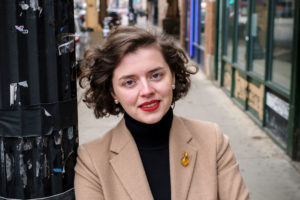 Meet Maya
Meet Maya
Maya Dukmasova ’12
I’m a staff writer at the Reader, Chicago’s alternative weekly newspaper. My work has taken me to every one of the city’s 77 community areas. I live in Andersonville—once a Swedish village on the city’s far north side—and work in Bronzeville, Chicago’s historic Black Metropolis.
For all its beauty and attractions, Chicago is also known as one of the most racially segregated cities in America—white people are concentrated on the north side, while the south and west side are predominantly African American. Latinx communities are clustered on the northwest and southwest sides of town, and there’s a historic Chinatown and Asian neighborhoods on the near south side and far north sides of the city.
The divisions are at the root of a lot of social and economic problems, and they’re also a barrier to getting to know the place, even for locals. People tend to stick to their neck of the woods. I wanted to suggest places to visit that might be farther from the main tourist hubs but will definitely show you a side of Chicago you won’t hear about on the news.
This article, written by Maya Dukmasova ’12, originally appeared in the winter issue of Rochester Review magazine.
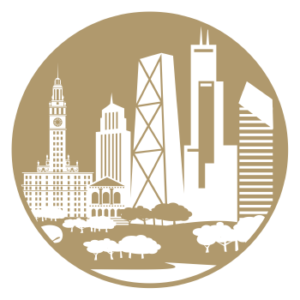
Chicago: this network’s for you
Eric Weissmann ’10, who became a father last August, is already dreaming of connecting his family to his alma mater. “I want to see the University community grow and flourish so that when Jonah, my son, enrolls in the Class of 2040, I want the University to be a better place than when I was there.”
As a cochair of the Chicago Network Leadership Cabinet, Weissmann is bringing a similar sensibility to his work to celebrate a strong Rochester community in the Greater Chicago area. He and cochair Suzanne Sawada ’73 lead the cabinet, part of a strategic initiative to highlight Rochester connections in cities such as Baltimore, Boston, San Francisco, Los Angeles, Philadelphia, Rochester, and New York City.
“I’ve been actively engaged as a University of Rochester advocate and volunteer since my freshman year, and I never stopped,” says Weissmann. “The reason I give back with my time is one part selfish and one part responsibility. The part that’s selfish is I love spending time with Rochester alumni; I like learning from the Rochester community. The responsibility part is I believe I will be forever indebted to the University based on my experience and time there.”
Philip Greenland ’74M (MD), ’78M (Res) says that the network helps dispel the myth that most Rochester alumni are on the East Coast. “I’ve had an opportunity to meet with undergraduates from Chicago who are going to U of R, to meet their parents, and it’s really been very heartwarming because the students that are going from Chicago are really happy and doing really well.”
For more about the regional networks, visit rochester.edu/alumni/regional-network.
